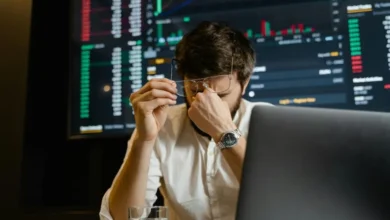
In the world of stock market trading, there are countless strategies and theories designed to help traders predict price movements. One concept that has gained attention, particularly in the options trading community, is known as Spy Max Pain. If you’ve heard of it but are not quite sure what it means or how to use it, this complete guide will walk you through the basics, its importance, and how traders attempt to apply it to their strategies.
What Is Spy Max Pain?
The term Max Pain refers to the point where the greatest number of options contracts (both calls and puts) expire worthless. In simple terms, it’s the price level where option buyers feel the most financial “pain,” while option sellers (often institutions or market makers) benefit the most.
When applied to SPY the popular ETF that tracks the S&P 500 this concept is often called Spy Max Pain. Traders watch this level closely because it is believed that market makers may have an incentive to keep prices near this point as options expiration approaches.
The Logic Behind Max Pain
The idea is based on the principle that most options traders lose money, while option sellers (like large institutions) profit more consistently. Since institutions are powerful enough to influence markets, the theory suggests they may allow or even push SPY’s price toward the max pain level.
For example:
If a large number of call options are open at a strike price of 450 and put options are clustered at 440, the max pain price may sit somewhere between these levels.
As expiration approaches, SPY may gravitate toward this point, causing the maximum number of contracts to expire worthless.
How to Calculate Spy Max Pain
Calculating Spy Max Pain involves summing up the dollar value of outstanding call and put options at each strike price. The strike with the least total combined payout is considered the max pain level.
While traders can calculate it manually, most rely on online tools, market data platforms, or broker-provided resources that show the max pain number in real time.
Why Spy Max Pain Matters
Traders use the Spy Max Pain theory because:
-
It can provide clues about where SPY’s price may settle before options expiration.
-
It highlights areas of heavy options activity, which often align with support or resistance levels.
-
It helps short-term traders anticipate possible price “pinning” at certain strikes.
However, it’s important to note that this isn’t a guarantee it’s more of a tendency that sometimes plays out in the market.
Limitations of the Max Pain Theory
While intriguing, the Spy Max Pain strategy has its limitations:
-
Not Always Accurate – Prices don’t always move to the exact max pain level.
-
Other Market Forces – News, earnings reports, or economic data can push SPY strongly in one direction regardless of options positioning.
-
Short-Term Focus – Max pain is generally only useful near options expiration, not for long-term predictions.
-
Institutional Strategies Vary – Market makers don’t always “manipulate” prices to max pain; sometimes it’s simply a coincidence.
For these reasons, traders often combine Spy Max Pain with technical analysis, volume tracking, or macroeconomic indicators for a more balanced approach.
Trading Strategy Using Spy Max Pain
Here are a few ways traders attempt to use Spy Max Pain in their trading strategies:
Identify Price Pinning Levels
If SPY is approaching expiration and trading close to the max pain price, traders may expect it to hover around that level. This can help in planning short-term trades.
Options Selling Advantage
Since the theory favors option sellers, some traders use Spy Max Pain to decide which strike prices may have the highest chance of expiring worthless giving sellers an edge.
Risk Management Tool
Knowing the max pain point can help traders avoid buying options too far out of the money, as these contracts are more likely to expire with no value.
Supplement to Technical Analysis
Traders often look for confluence between Spy Max Pain levels and technical support or resistance zones. When these overlap, the levels may become even more significant.
Example of Spy Max Pain in Action
Imagine SPY is trading around $445, with a large number of open calls at $450 and puts at $440. If the calculated max pain level is $445, traders might expect SPY to remain close to that level as expiration approaches.
If the price drifts upward to $449, heavy call open interest may act as resistance, pushing SPY back down toward the $445 level. This doesn’t always happen, but when it does, it can provide valuable insights for short-term positioning.
Who Uses Spy Max Pain?
Day Traders – They use it to anticipate end-of-day or end-of-week price action.
Options Traders – They watch it closely to decide which strikes to sell or avoid buying.
Swing Traders – They may use it as one of several factors when planning trades around options expiration.
Is Spy Max Pain Reliable?
The short answer is: sometimes. Many traders argue that it works best in low-volatility environments, when no major economic news is moving the market. In high-volatility weeks, SPY can swing widely, ignoring max pain levels.
Therefore, Spy Max Pain should be viewed as a guide, not a rule. It adds one more layer of understanding but should not replace solid risk management or technical analysis.
Final Thoughts
The concept of Spy Max Pain is fascinating because it blends psychology, market structure, and trading behavior. It reminds traders that institutions and market makers often hold the upper hand in the options market.
While not foolproof, Spy Max Pain can serve as a useful tool when paired with other strategies. Traders who understand its strengths and weaknesses are better positioned to make informed decisions.
In the end, the best approach is to treat Spy Max Pain as one piece of the puzzle. Use it alongside broader analysis, maintain discipline, and always manage risk carefully.




